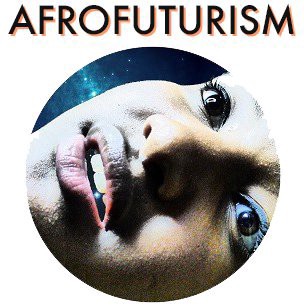

When we think about technology, most of us realize that it includes more than just gadgets and robotics, or the images of rockets and spaceships that filled 20th-century science fiction. Technology is fascinating because it tells us so much about what has meaning for the people who create it–both how environments inspire ideas and how those ideas in turn can shape their environments.
Humans have always used technology for survival, and early material innovations like the slingshot and spear-thrower literally extended the physical capabilities of our bodies. Others, like the loom–to my mind, one of the most significant technologies after fire and the wheel–allowed means of mass self-expression that have evolved into trillion-dollar industries.
Most interesting for me, however, is what technology tells us about how we think humans should interact with their environment. In his essay, “The Question Concerning Technology,” Heidegger describes technology as “a way of revealing “¦ [i]t is the realm of revealing, i.e., of truth.” While it might seem a bit problematic to quote a philosopher affiliated with the Nazis in an article about Afrofuturism, I promise that’s as far as it goes. Scraping out the innards of Heidegger’s philosophy is more my kind of thing–as it holds an intriguing idea about what technology is, especially from an Afrofuturist perspective.
That’s partly because it is from an Afrofuturist vantage point, in particular, that technology can become something more than just material. Or at least one of the ways this sort of thing can happen–after all, abstract things like legal codes, political institutions, philosophical movements, organized religions, and so on are also technologies, created to extend our reach through time as a means of keeping memories and knowledge alive. Afrofuturism sees these non-material technologies as key, but also includes race and gender as integral. To quote Ytasha Womack, “Afrofuturism views race as a technology, a man-made creation with power imbalances and seeks to heal this idea of separation in humanity.”
That means Afrofuturism is all about viewing technology as revelation. At its heart, it’s about addressing imbalances–between groups of people, but also between humans and their environment. I refer to this as a kind of social justice “outsider tech,” or technology developed outside of the mainstream technology industry.
Outsider tech and Afrofuturism go hand in hand–both are inherently political, and they empower those outside of traditional centers of power.
If you’re outside something, looking in, it’s easier to critique those centers of power–often with an independent attitude that celebrates the hacker’s resourcefulness rather than the benevolence of institutions he or she interrupts. This is a world where hackathons are our board meetings and online forums our lecture halls, where the insatiably curious and the rebel-spirited can find refuge and space to grow.

The Cyberquilting Experiment is one such example. First emerging as part of a response to the Jena Six trial, the aim of activist Fallon Wilson and her compatriots was to grow networks, allowing women of color to access information “across and within geographical regions.”
One of the unfortunate facts of life in the 21st century is that even though we’ve made leaps and bounds in terms of medicine, quality of life, and cool gadgetry, we still have to deal with unresolved issues relating to our inequitable social structures. Women of color are disproportionately under threat of violence, both within and outside the home. At the same time, they’re also within a social group with less access to the very tools that can lead to self-empowerment. Projects like the Cyberquilting Experiment are just as much a response to those realities as they are ways to deal with the increased separation between communities, made all the starker for those without access to social network technologies.
With nodes active throughout the United States, from Atlanta to Detroit to Washington, D.C., the cyberquilting project provides a means of education and communication and shows how underprivileged communities can become hackers in their own right, dismantling oppression in their local community halls through the power of the internet and social justice.
Other centers providing a tech-positive, inclusive education are liberal institutions like the Boston Arts Academy. Since its founding in 1998, the BAA has always focused on mixing the arts into STEM subjects, using a projects-based approach to learning where students can gain much needed research and lateral thinking skills. By recognizing the similarities between the artistic process and the engineering design process, where observation, modeling, and analysis are key, BAA has created a learning environment wherein even those who were previously less confident in math and science can acquire the skills of particular importance when considering the impact that advanced robotics, AI, and deep machine learning will have on the automation of the workplace.
The award-winning STEAM Lab, headed by Dr. Néttrice Gaskins, was opened in 2014. Gaskins is a proponent of putting culturally responsive education at the center of any makerspace, and cites hip-hop legends like Grandmaster Flash and J Dilla “whose impulse to make and tinker was rooted in their desire to spread knowledge and educate the black community” as part of the hacker tradition.
It says a lot about institutionalized ableism that the disabled person is often left out of discussions about future tech. Even when they are included, it’s often from the view that they are a victim of their disabilities, rather than socially enforced ableism–a view which ultimately impacts the way technologies are developed. For those who must also deal with the effects of institutionalized racism, this too interferes with access to technologies and therapies.
One scientist who was inspired by accessibility is Kay Igwe, a technologist investigating new methods for brain-computer interfaces. She was originally moved to create video games for disabled persons–demonstrating again how the intersection of identity, technology, and necessity can work to make social and scientific advancements. Indeed, I hope we’re moving toward an understanding that both spheres are deeply entwined.

In the same way one could argue that the rise of the hacker and the enterprising technopunk has affected the mainstream tech ecosystem, initiatives like the Cyberquilting Experiment are changing how we think about activism and social care, just as the STEAM Lab work on another front to break down barriers between the arts and sciences–one graduate at a time.
The artist Denenge Akpem describes the Africanist philosophy of art as one of perpetual invention, where “virtuosity is marked by improvisation.” There are many examples of technological virtuosity displayed by black and African makers, hackers, and technopunks (or whatever you want to call them), and as more attention is paid to the rapid rate of development taking place in countries like Kenya, Uganda, Nigeria, and Ghana I’m sure we’ll be seeing a lot more. If anything, it provides evidence that the hacker’s heritage as much belongs to the black person as it does to anyone else. Ultimately, it’s important to recognize our contribution to technology for what it is, rather than cloaking it in subtly racist language which ultimately seeks to downplay our history, limiting us to specific spheres of culture.
Technology needs to be intersectional. It means we can all have a hand in creating new products, traveling to new places, and working with new people. Above all, an intersectional technological culture is one that is constantly inspired to rethink what tech means and what it can achieve, thus reinvigorated by ever new and exciting insights. It’s by doing so that we can keep exploring and reimagining what it means to be human in the wondrous universe that we exist.
Read more:
- “Taking the Knowledge Sharing Campaign to the Next Level”
- “Recontextualizing the Makerspace: Culturally Responsive Education“
- “The Electrofunk Mixtape“
- “Rising Stargirls“
- “The Cyber-Quilting Experiment: A New Kind of Movement“


How We Get To Next was a magazine that explored the future of science, technology, and culture from 2014 to 2019. This article is part of our collection of conversations about Afrofuturism, curated and edited by Florence Okoye of Afrofutures UK. Click the logo to read more.
